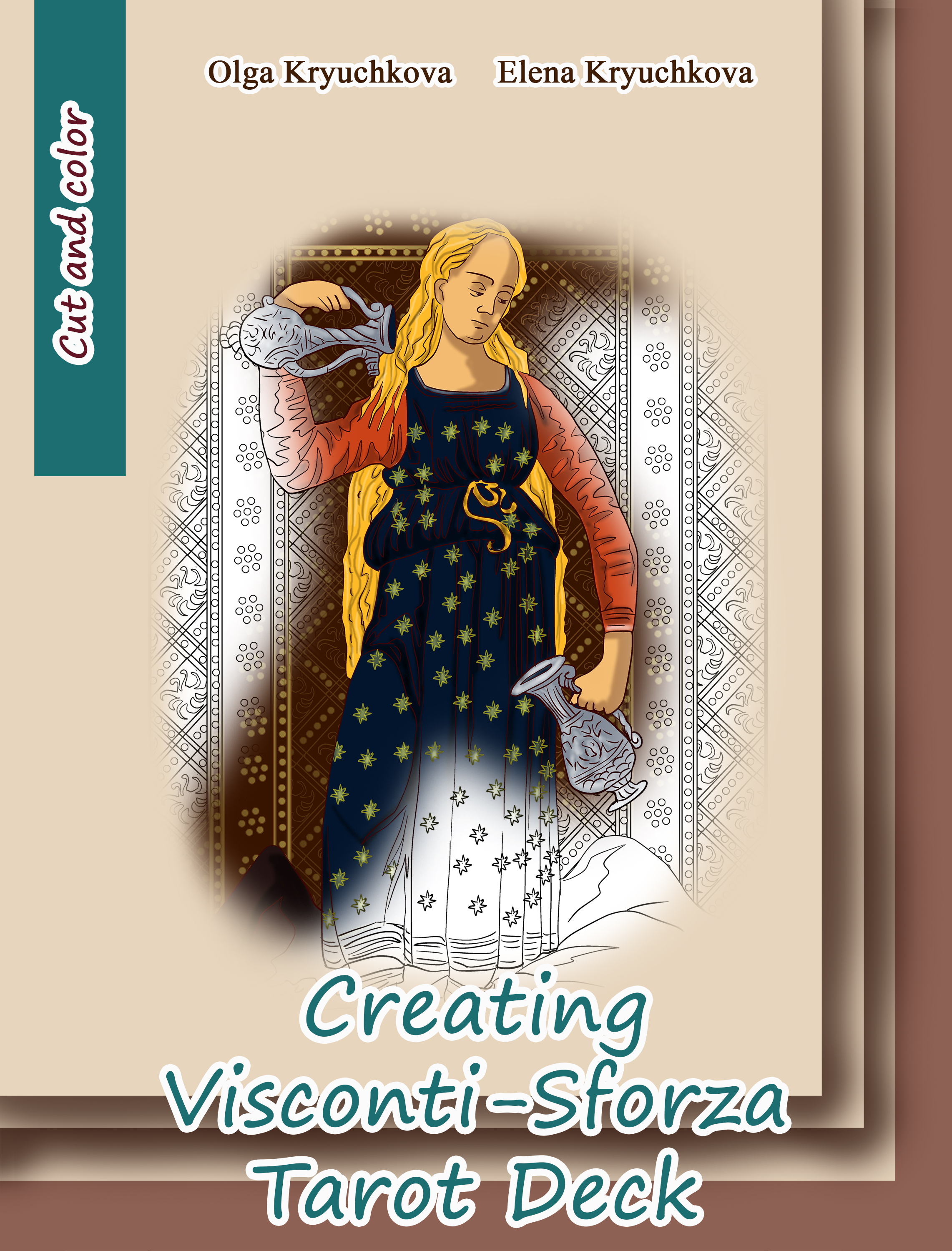
This book includes a description of the medieval deck of Visconti-Sforza tarot.
Each card has a description and the following aspects: business, medical, love, psychological. Also given are the features of this unique Tarot deck.
The book has a section in which there is a black and white image of cards for coloring. The reader can colorize the cards, give them energy, escape from everyday problems, and engage in creativity. Then, painted cards can be cut out and pasted onto cardboard - and thus get your own unique deck of cards, which you can use as an assistant in everyday life.
The book is intended for a wide audience with a primary interest in divination cards and tarot cards.
This book will focus on the Visconti-Sforza tarot deck and the creation of cards with your own hands.
Once, almost five hundred years ago, the deck was ordered to create the Filippo Maria Visconti, Duke of Milan, and his son-in-law, Francesco Sforza.
Now the name is used, as a collective, for expensive “old Milan” cards, which were drawn by hand in honor of important events in the life of Milanese rulers of the 15th century. Such cards were made of pressed cardboard; a thin layer of gesso (special primer) was applied to them. Then they were covered with gold leaf and silver, and then painted with tempera, special paint.
The name of the Visconti-Sforza tarot is also used for scattered cards. They are located in various museums and libraries, in various parts of the world.
Most of these decks currently have only one or two cards. In total, there are currently over two hundred and seventy of these cards in total. They are divided by appearance, size and other details. As a result, they are conditionally divided into 15 groups.
The largest of these groups includes the three most famous and complete decks of Visconti-Sforza tarot.
The first is the Pierpont Morgan Bergamo Visconti-Sforza deck. It is also known as the Colleoni-Baglioni and Francesco Sforza deck. It lacks 4 cards out of 78: “The Devil”, “The Tower”, “Knight of Coins” and “Three of Swords”. Thirty-five cards from this deck are stored in Morgan Library & Museum in New York City. Another 26 cards are stored in the Accademia Carrara, and 13 cards are in the private collection of the Colleoni family in Bergamo.
These cards have a gold background for images, floral ornaments for the rest of the cards. Cards, unfortunately, are not numbered and not signed. But presumably, the deck was ordered to the artist on the day of the coronation of Francesco Sforza in 1450.
| Language | Status |
|---|---|
|
Afrikaans
|
Unavailable for translation.
|
|
Arabic
|
Unavailable for translation.
|
|
Bulgarian
|
Unavailable for translation.
|
|
Chinese
|
Unavailable for translation.
|
|
Czech
|
Unavailable for translation.
|
|
Danish
|
Unavailable for translation.
|
|
Dutch
|
Unavailable for translation.
|
|
Estonian
|
Unavailable for translation.
|
|
Finnish
|
Unavailable for translation.
|
|
French
|
Unavailable for translation.
|
|
German
|
Unavailable for translation.
|
|
Greek
|
Unavailable for translation.
|
|
Hindi
|
Unavailable for translation.
|
|
Icelandic
|
Unavailable for translation.
|
|
Indonesian
|
Unavailable for translation.
|
|
Irish
|
Unavailable for translation.
|
|
Italian
|
Unavailable for translation.
|
|
Japanese
|
Unavailable for translation.
|
|
Malay
|
Unavailable for translation.
|
|
Norwegian
|
Unavailable for translation.
|
|
Polish
|
Unavailable for translation.
|
|
Portuguese
|
Already translated.
Translated by Fernanda Lyra
|
|
Romanian
|
Unavailable for translation.
|
|
Russian
|
Unavailable for translation.
|
|
Sinhala
|
Unavailable for translation.
|
|
Slovenian
|
Unavailable for translation.
|
|
Spanish
|
Already translated.
Translated by Barbara Ayala
|
|
Swedish
|
Unavailable for translation.
|
|
Thai
|
Unavailable for translation.
|
|
Turkish
|
Unavailable for translation.
|